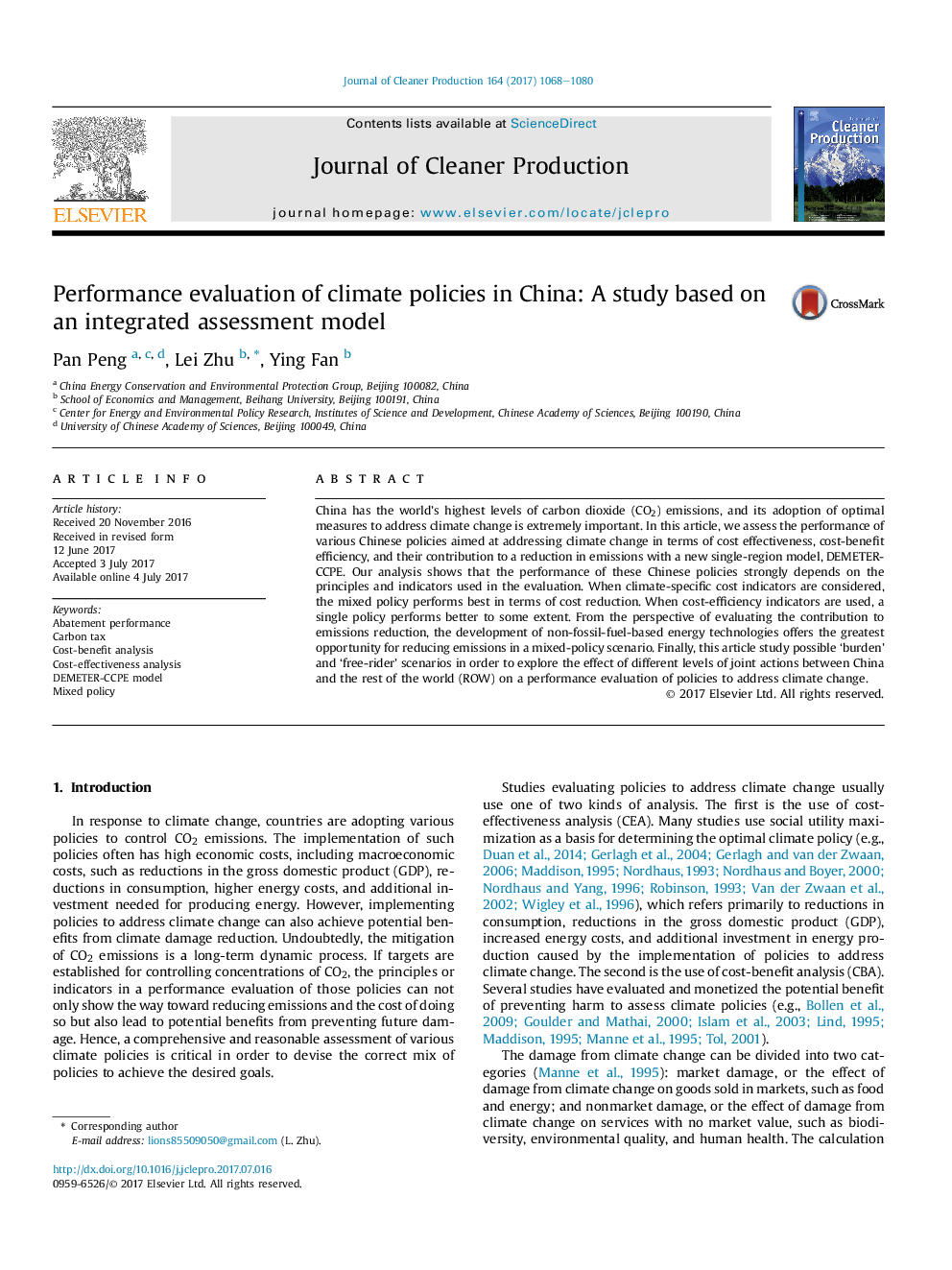| Article ID | Journal | Published Year | Pages | File Type |
|---|---|---|---|---|
| 5480514 | Journal of Cleaner Production | 2017 | 13 Pages |
Abstract
China has the world's highest levels of carbon dioxide (CO2) emissions, and its adoption of optimal measures to address climate change is extremely important. In this article, we assess the performance of various Chinese policies aimed at addressing climate change in terms of cost effectiveness, cost-benefit efficiency, and their contribution to a reduction in emissions with a new single-region model, DEMETER-CCPE. Our analysis shows that the performance of these Chinese policies strongly depends on the principles and indicators used in the evaluation. When climate-specific cost indicators are considered, the mixed policy performs best in terms of cost reduction. When cost-efficiency indicators are used, a single policy performs better to some extent. From the perspective of evaluating the contribution to emissions reduction, the development of non-fossil-fuel-based energy technologies offers the greatest opportunity for reducing emissions in a mixed-policy scenario. Finally, this article study possible 'burden' and 'free-rider' scenarios in order to explore the effect of different levels of joint actions between China and the rest of the world (ROW) on a performance evaluation of policies to address climate change.
Related Topics
Physical Sciences and Engineering
Energy
Renewable Energy, Sustainability and the Environment
Authors
Pan Peng, Lei Zhu, Ying Fan,
